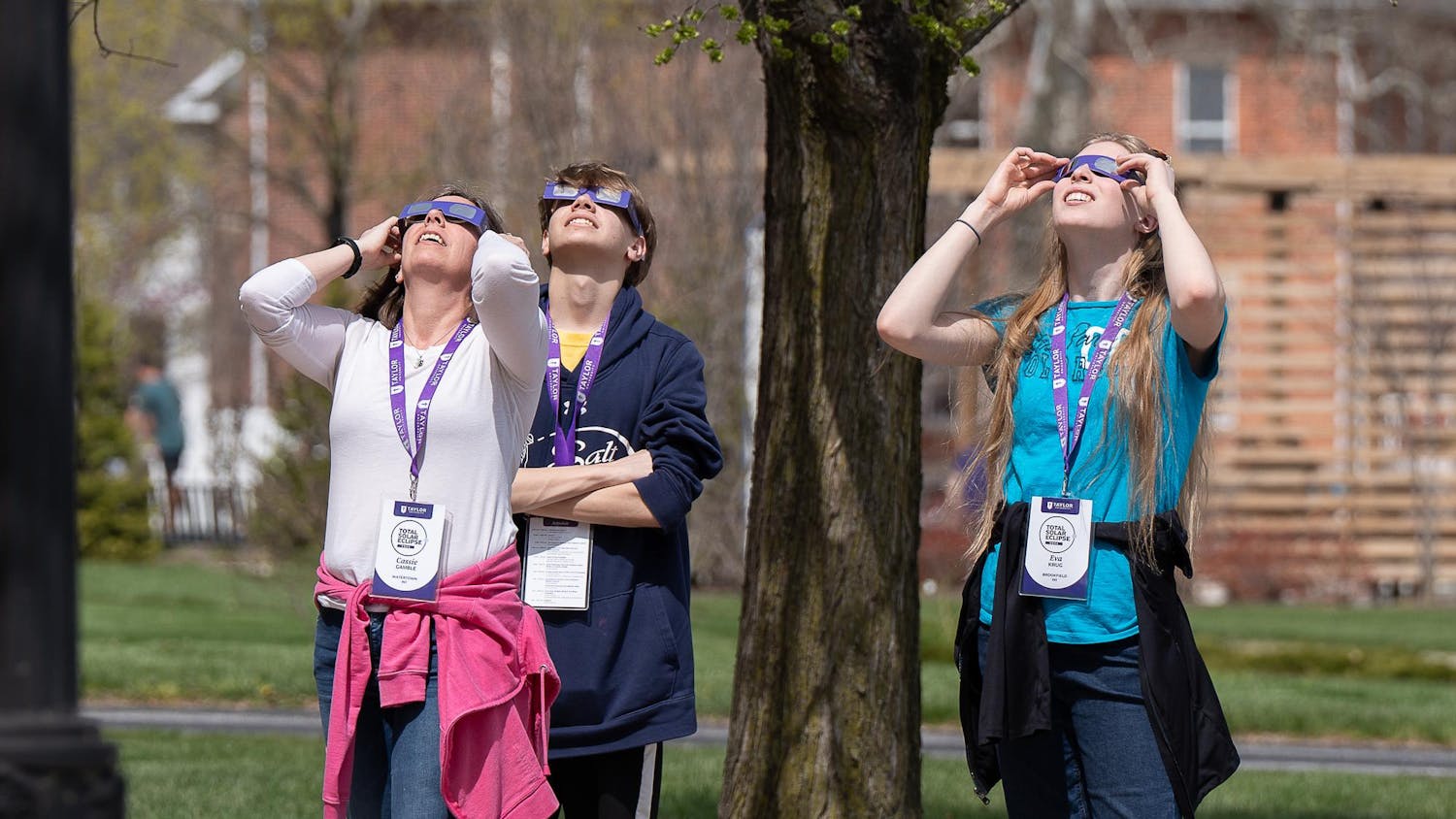The boundless landscape of contemporary visual arts attests to its deepening relationship with digital technology
By Kathryn Kroeker, A&E EditorAn astounding party scene kicked off this week with the opening of . The New York Times reported that art lovers across the globe have gathered to celebrate their passion at the annual contemporary-arts trade fair, which began yesterday and will end Dec. 9. This edgy, high-spirited event seems a far cry from the silent galleries we typically associate with the fine arts. But according to Taylor art professor Rachel Smith, today's art scene has been a work in progress since electronic and digital technologies emerged. These revolutionized how art is created, consumed and perceived, and the current art landscape's dynamic features mark its deepening relationship with technology. While traditional art mediums such as painting, drawing and sculpture remain important, the explosion of innovative technology redefined art for a new generation. Smith said emphasis on audience participation is growing, thanks to the internet. "With technology we see all kinds of ways that audiences are encouraged to actually engage in and contribute to works of art," she said. A trending art form called installation art specifically encourages audience interaction. Artists place works of art in a context where audiences can physically interact with the work. Smith said the interactive element is central to both form and the meaning in the work. "The audience (is) not just a passive observer or a recipient of what the artwork (has) to offer, but actually in a sense almost complete(s)," she said. The web has also changed how artists interact with audiences and vice versa. Virtually every contemporary artists has a personal website, and online galleries allow audiences to view and purchase artwork directly from the artists. Smith said this demonstrates a remarkable shift from how art was made available to the public even 20 years ago. "While the formal institutions like galleries and dealers and auction houses are still very important, artists are no longer dependent on those for building their career," Smith said. Contemporary artists are more apt to skip these antiquated "powerbrokers" and work directly with the buyer. Smith said Taylor's art department has addressed this shift in the classroom by facilitating these kinds of initiatives for students, such as creating a website to mount student work. "These are also things that are addressed in art senior seminars," she said. Although artists no longer feel compelled to work with the art establishment, they are increasingly forming collaborations with one another. Art critic Ben Valentine wrote in an article for Hypoallergic.com which ran in the Huffington Post that popular music artists frequently partner with visual artists. "Like many old boundaries that have been collapsing, today's musicians and artists often work with or reference one another in an increasingly direct way," Valentine said. The collaborative efforts he cited include Katy Perry commissioning artist Will Cotton to paint her "Teenage Dream" (2010) album cover, as well as Nicki Minaj featuring an installation art background for her hit music video, "The Boys." This type of collaboration is possible because current technology blurs the lines between the digital and traditional. "It's all combined together in life," Valentine said, "so it makes sense for the artists to work that way as well." Smith said this trend can also be seen within the visual arts themselves. She said forms of communications media, such as video, are now being frequently used in art production. "There's less work that fits neatly into some of the preexisting categories," Smith said. "There's more work that crosses those boundaries." The partnership between art and technology is not flawless. One of the major disadvantages of easy accessibility to audiences is that there is now a surplus of artwork being distributed online. Digital sculptor Eyal Gever wrote in BBC News that uninhibited distribution may diminish our ability to evaluate what constitutes great art. "It is now easier to create 'art,'" Gever said, "and we see a lot of bad 'art' being created." Because easy distribution tends to place everything on an equal footing, contemporary audiences are required to create their own criteria for evaluating art. Smith said today's artistic standards can be summarized by the question, "What is it trying to achieve, and does it do it successfully?" Smith said this emphasizes the work's impact. "What constitutes a work of art . . . is that it shows us something in a fresh way, so that we see or experience something differently than we might have before," Smith said. Smith said this element of the contemporary artistic perspective particularly resonates with her. "I believe that the arts are one of the great goods that God has given to human beings," she said. "Developing our capacity to engage them effectively enriches us and has the potential to develop our understanding of things (in a way) that can be really unexpected."



